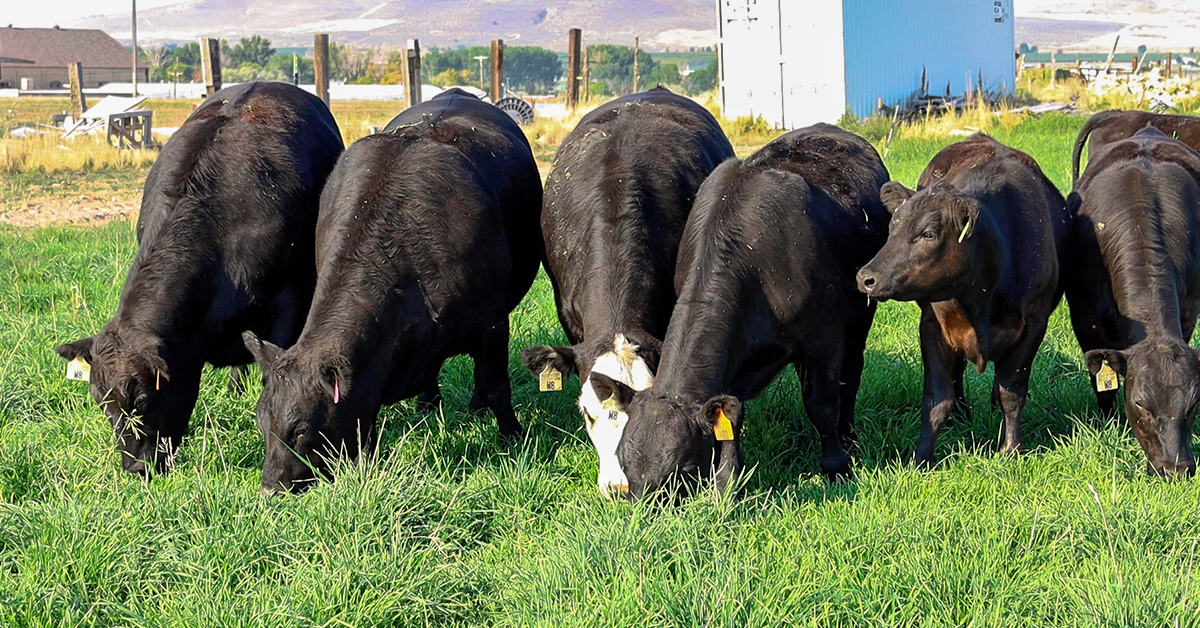In recent years, there has been a resurgence of interest in grass-fed beef, fueled by concerns over health, environmental sustainability, and animal welfare. As consumers become more conscious of what they put on their plates, grass-fed beef has emerged as a popular alternative to conventionally raised meat. But what exactly is grass-fed beef, and what are its benefits? In this comprehensive guide, we’ll explore everything you need to know about grass-fed beef, from its nutritional advantages to best practices for sourcing and cooking.

What is Grass-Fed Beef?
Grass-fed beef comes from cattle that are raised primarily on a diet of grass and forage, as opposed to grain-fed cattle, which are typically raised in feedlots and fed a diet of corn and soy. While all cattle start out grazing on grass, conventionally raised cattle are often transitioned to a grain-based diet in feedlots to fatten them up more quickly.
Grass-fed beef, on the other hand, is allowed to graze on pasture for the duration of its life, resulting in meat that is leaner and often more flavorful than grain-fed beef. Additionally, grass-fed beef is typically higher in certain nutrients, such as omega-3 fatty acids, vitamin E, and conjugated linoleic acid (CLA), which have been linked to numerous health benefits.
Benefits of Grass-Fed Beef
- Nutritional Superiority: Grass-fed beef is richer in key nutrients compared to its grain-fed counterpart. It contains higher levels of omega-3 fatty acids, which are essential for heart health, as well as more antioxidants like vitamin E and beta-carotene.
- Leaner Meat: Grass-fed beef tends to be leaner than grain-fed beef, which means it contains less total fat and fewer calories. This can be beneficial for those looking to maintain a healthy weight or reduce their intake of saturated fat.
- Environmental Sustainability: Grazing cattle on pasture instead of confining them in feedlots can have environmental benefits. Grass-fed beef production is often more sustainable, requiring less water and producing fewer greenhouse gas emissions.
- Animal Welfare: Grass-fed cattle are typically raised in more humane conditions, with access to open pasture where they can roam and graze naturally. This is in stark contrast to the crowded and sometimes unsanitary conditions found in many conventional feedlots.
- Improved Flavor: Many people find that grass-fed beef has a richer, more complex flavor compared to grain-fed beef. This is due to factors such as the variety of grasses and forage consumed by the cattle, as well as the slower growth rate associated with a grass-based diet.
Best Practices for Sourcing Grass-Fed Beef

- Look for Certifications: When purchasing grass-fed beef, look for certifications from reputable organizations such as the American Grass fed Association (AGA) or the USDA’s Grass Fed label. These certifications indicate that the beef has met certain standards for grass feeding and humane treatment of animals.
- Buy Local, if Possible: Whenever possible, try to source grass-fed beef from local farmers or ranchers. Not only does buying local support small-scale agriculture, but it also reduces the carbon footprint associated with transportation.
- Ask Questions: Don’t be afraid to ask questions about how the beef was raised and processed. A reputable farmer or butcher should be able to provide information about the animal’s diet, living conditions, and any additional practices such as organic or regenerative farming methods.
- Consider Online Retailers: If you don’t have access to grass-fed beef locally, consider purchasing it from online retailers who specialize in sustainable and ethically sourced meats. Many of these companies offer a wide selection of cuts and can ship directly to your door.
- Support Grass-Fed Dairy: In addition to beef, consider incorporating other grass-fed dairy products such as milk, cheese, and yogurt into your diet. These products are also rich in nutrients and can contribute to a more sustainable food system.
Tips for Cooking Grass-Fed Beef
- Lower Cooking Temperatures: Grass-fed beef cooks more quickly than grain-fed beef due to its lower fat content, so be mindful of cooking temperatures to prevent overcooking. Use a meat thermometer to ensure your beef reaches the desired level of doneness without drying out.
- Marinate or Tenderize: Grass-fed beef can be slightly tougher than grain-fed beef due to its leaner nature. Consider marinating cuts of beef or using a meat tenderizer to help break down muscle fibers and improve tenderness.
- Opt for Slow Cooking Methods: Slow cooking methods such as braising, stewing, or roasting at low temperatures can help tenderize tougher cuts of grass-fed beef while allowing their rich flavor to develop.
- Let it Rest: Allow cooked grass-fed beef to rest for a few minutes before slicing or serving to allow the juices to redistribute evenly throughout the meat. This will help keep it moist and flavorful.
- Experiment with Flavors: Grass-fed beef pairs well with a variety of herbs, spices, and marinades. Get creative in the kitchen and experiment with different flavor combinations to enhance the natural taste of the beef.
In conclusion,
Grass-fed beef offers a range of benefits, from its superior nutritional profile to its positive environmental and ethical implications. By following best practices for sourcing and cooking grass-fed beef, you can enjoy delicious and nutritious meals while supporting sustainable agriculture and animal welfare practices. So the next time you’re at the grocery store or farmers’ market, consider choosing grass-fed beef for a healthier, more flavorful dining experience.

